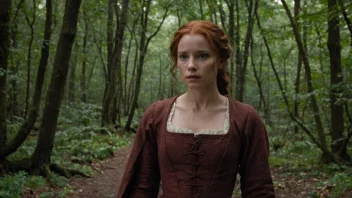Young Adult (YA) fiction has emerged as one of the most vibrant and engaging genres in contemporary literature, catering to a demographic that is at a pivotal stage in life. The issues of love, friendship, and relationships are central themes in YA novels, reflecting the complex realities that teenagers face as they navigate their formative years. From the intense bonds of friendship to the exhilarating highs and devastating lows of romantic relationships, YA fiction provides a nuanced exploration of how these connections shape identity and understanding. In this article, we will delve deep into how YA literature portrays relationships and friendships, examining the dynamics at play and the lessons that can be learned from them.
The Significance of Relationships in YA Fiction
In YA literature, relationships serve as a mirror to the real world, where friendships and romantic entanglements can define one’s high school experience. The importance of these connections is twofold: they offer emotional depth to the narrative while allowing readers to identify with characters who mirror their own experiences. This genre often explores the following key aspects:
- Identity Formation: Relationships help characters discover who they are, what they value, and how they relate to the world around them.
- Emotional Growth: Characters often undergo significant emotional development through their interactions with others, showcasing the transformative power of relationships.
- Social Dynamics: YA fiction frequently addresses themes such as peer pressure, social hierarchies, and the complexities of forming and maintaining friendships.
Friendship Dynamics in YA Literature
Friendships in YA fiction are portrayed in a variety of ways, from the close-knit bonds of childhood to the tumultuous relationships that often arise during adolescence. Here are some common themes:
1. Loyalty and Betrayal
Many YA novels highlight the theme of loyalty among friends, showcasing how these relationships can be a source of strength. However, they also explore the inevitability of betrayal, whether through jealousy, misunderstandings, or the desire for personal growth. Books like The Perks of Being a Wallflower by Stephen Chbosky delve into how betrayal can lead to deep emotional scars, while others like We Were Liars by E. Lockhart illustrate how fragile friendships can become.
2. Diversity of Friendships
YA fiction often emphasizes the importance of diverse friendships, challenging stereotypes and societal norms. Characters from different backgrounds, cultures, and identities come together to form bonds that enrich their lives. For instance, in Simon vs. the Homo Sapiens Agenda by Becky Albertalli, the protagonist navigates his friendship with a diverse group of peers, learning valuable lessons about acceptance and love.
3. The Role of Conflict
Conflict is a natural element in friendships, and YA literature does not shy away from this reality. Novels frequently depict arguments, misunderstandings, and the process of reconciliation, reflecting the ups and downs of real-life relationships. In Fangirl by Rainbow Rowell, the tension between Cath and her twin sister Wren illustrates how life changes can affect even the closest of friendships.
Romantic Relationships in YA Fiction
Romantic relationships are often at the forefront of YA fiction, providing both excitement and angst. These connections are portrayed with a wide range of emotions and complexities:
1. First Love and Infatuation
YA novels frequently capture the thrill of first love, highlighting the intense emotions that accompany these experiences. Books like The Fault in Our Stars by John Green showcase the beauty and fragility of young love, emphasizing the importance of cherishing moments while grappling with the reality of loss.
2. Healthy vs. Unhealthy Relationships
In recent years, there has been a growing emphasis on depicting healthy relationships in YA fiction. Authors are increasingly aware of the impact that literature can have on young readers, and they strive to portray partnerships that are built on respect, communication, and mutual support. Conversely, some narratives also explore unhealthy relationships, serving as cautionary tales about toxicity and manipulation. To All the Boys I've Loved Before by Jenny Han presents a budding romance that balances excitement with the importance of boundaries and self-respect.
3. The Intersection of Friendship and Romance
Many YA novels explore the transition from friendship to romance, highlighting the complexities that arise when feelings evolve. This theme is beautifully captured in Anna and the French Kiss by Stephanie Perkins, where a strong friendship blossoms into a meaningful romantic relationship, demonstrating how the foundation of friendship can enrich romantic connections.
Exploring Identity through Relationships
Relationships in YA fiction often serve as a vehicle for characters to explore their identities. The connections they form can challenge societal expectations and personal beliefs:
1. LGBTQ+ Representation
The rise of LGBTQ+ representation in YA literature has brought forth important narratives around identity and relationships. Books like Aristotle and Dante Discover the Secrets of the Universe by Benjamin Alire Sáenz delve into the complexities of sexual orientation and the impact of love and friendship on self-acceptance. These narratives encourage readers to embrace their identities while recognizing the importance of supportive relationships.
2. Cultural Identity
Many authors use relationships to explore cultural identity, showcasing how friendships and romances can be influenced by cultural backgrounds and traditions. In Everything, Everything by Nicola Yoon, the protagonist Maddy navigates her relationships while grappling with her mixed-race identity, illustrating how love and friendship can transcend cultural boundaries.
Literary Trends in YA Relationships
As the genre evolves, certain trends have emerged in the portrayal of relationships and friendships in YA fiction:
1. Focus on Mental Health
There has been a noticeable shift towards addressing mental health issues within the context of relationships. Authors now explore how mental health challenges affect friendships and romantic partnerships, raising awareness and promoting empathy among readers. In Turtles All the Way Down by John Green, the protagonist's struggles with anxiety impact her relationships, providing a realistic portrayal of how mental health can shape connections.
2. Intersectionality and Inclusivity
Modern YA literature increasingly embraces intersectionality, recognizing that characters' identities are multifaceted. This trend has led to more inclusive representations of friendships and romances that reflect the diversity of the real world. Books like The Hate U Give by Angie Thomas highlight the intersection of race, class, and identity within relationships, prompting readers to consider the broader social context in which they exist.
3. Realism vs. Fantasy
While some YA novels lean towards fantastical elements, others ground their stories in realism, focusing on relatable issues. This blend allows for a rich exploration of relationships, as characters face challenges that resonate with readers. For example, fantasy series like A Court of Thorns and Roses by Sarah J. Maas create intricate relationships within fantastical worlds while still addressing universal themes of love, sacrifice, and trust.
Conclusion
YA fiction serves as a vital platform for exploring the complexities of relationships and friendships during adolescence. The genre captures the essence of love, loyalty, betrayal, and self-discovery, resonating with readers who are navigating their own experiences. As authors continue to push boundaries and embrace diversity, the portrayal of relationships in YA literature will undoubtedly evolve, reflecting the ever-changing landscape of young adulthood. Through these stories, readers are encouraged to foster a love of reading while gaining insights into the intricacies of human connections.






